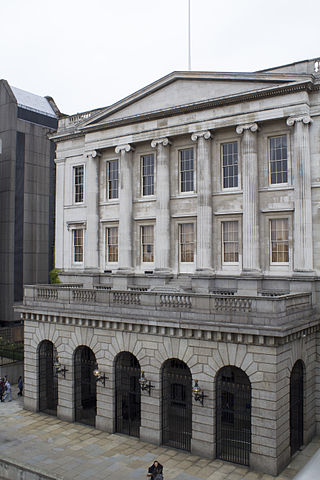
A livery company is a type of guild or professional association that originated in medieval times in London, England. Livery companies comprise London's ancient and modern trade associations and guilds, almost all of which are styled the "Worshipful Company of" their respective craft, trade or profession. There are 111 livery companies in total. They play a significant part in the life of the City of London, not least by providing charitable-giving and networking opportunities. Liverymen retain voting rights for the senior civic offices, such as the Lord Mayor, Sheriffs and Common Council of the City Corporation, London's ancient municipal authority with extensive local government powers.

The Worshipful Company of Vintners, one of the Great Twelve City Livery Companies, retains close links with the wine trade.

The Worshipful Company of Ironmongers is one of the Great Twelve livery companies of the City of London, incorporated under a Royal Charter in 1463.

The Worshipful Company of Cutlers is one of the ancient Livery Companies of the City of London. It ranks 18th in the order of precedence of the Companies.

The Worshipful Company of Pewterers is one of the 111 Livery Companies of the City of London. It ranks 16th in the order of precedence of City Livery Companies and has existed since at least 1348. Like all the other City Livery Companies, the Worshipful Company of Pewterers has four main pillars of activity: Charitable endeavour, assistance to education, support for its trade and profession, and being a convivial and caring social community.

The Worshipful Company of Armourers and Brasiers is one of the livery companies of the City of London. The Armourers' Guild was established in 1322; it received a royal charter in 1453. Other companies, including the Armour Repairers, merged with the Armourers. In 1708, brass workers joined the company, which was renamed as the Armourers' and Brasiers' Company. The company does support the metallurgy industry, but does not retain a close association with its original trade, as is the case with a majority of livery companies. It exists primarily as a charitable establishment.
The Worshipful Company of Wax Chandlers is one of the oldest livery companies of the City of London, with one of the smallest memberships.
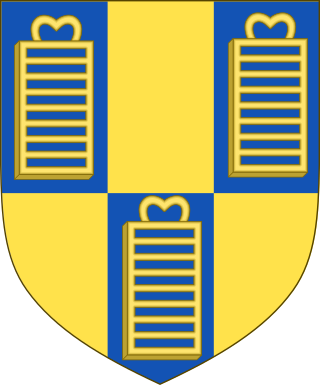
The Worshipful Company of Girdlers is one of the Livery Companies of the City of London.

The Worshipful Company of Butchers is one of the Livery Companies of the City of London, England. Records indicate that an organisation of butchers existed as early as 975; the Butchers' Guild, the direct predecessor of the present Company, was granted the right to regulate the trade in 1331. The Butchers' Guild was incorporated by Royal Charter centuries later, in 1605. The Butchers' still, unlike other Livery Companies, continues to exist as a trade association for members of the industry, instead of evolving into an institution primarily dedicated to charity. However, the Company does contribute, like all Livery Companies, to various charities.

The Worshipful Company of Saddlers is one of the Livery Companies of the City of London. A Guild of Saddlers, the Company's predecessor, is thought to have been an Anglo-Saxon Craft Guild – it certainly existed at some point in the eleventh century. The Guild became a Company when a Royal Charter of Incorporation was granted by King Edward III in 1363. The City granted the Company the right to regulate the trade of saddle-making; all saddlers in and within two miles of the City were subject to the Company's regulations. However, the powers of the Company, which has existed on the same site at Cheapside since 1160, were eroded over time.

The Worshipful Company of Cordwainers is one of the Livery Companies of the City of London. Cordwainers were workers in fine leather; the Company gets its name from "cordwain" (cordovan), the white leather produced from goatskin in Cordova, Spain. All fine leather makers, including Girdlers and Glovers, were originally classified as cordwainers; however, the term eventually came to refer only to fine leather footwear, including boots.

The Worshipful Company of Carpenters is a livery company of the City of London. The Carpenters were traditionally different from a fellow wood-crafting company, the Worshipful Company of Joiners and Ceilers, in that carpenters utilised nails while joiners used adhesives to attach wood.
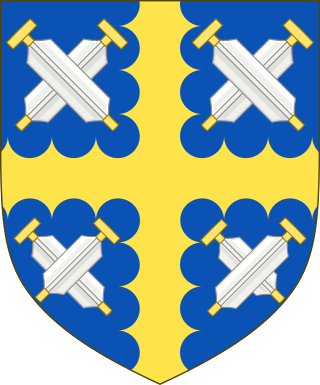
The Worshipful Company of Curriers is one of the ancient livery companies of London, associated with the leather trade.

The Worshipful Company of Plumbers is one of the livery companies of the City of London. The organisation received the right to regulate medieval plumbers, who were, among other things, responsible for fashioning cisterns, in 1365. It was incorporated under a royal charter in 1611. Today, the company is no longer a trade association, instead existing as a charitable institution.

The Worshipful Company of Innholders is one of the 111 livery companies of the City of London.

The Worshipful Company of Founders is one of the Livery Companies of the City of London, England. The Founders, or workers in brass and bronze, were incorporated under a Royal Charter in 1614. The Company is Trustee of charities which support the foundry industry by awarding grants and scholarships in materials engineering and other STEM subjects.

The Worshipful Company of Coopers is one of the livery companies of the City of London. The organisation of coopers existed in 1422; the Company received its first royal charter of incorporation in 1501. The cooper trade involved the making of wine, beer, and spirit casks ; the Livery Company also functions as a charitable foundation, and supports two education establishments: the Coopers' Company and Coborn School of Upminster, Essex, and Strode's College of Egham, Surrey. The former was founded in the Ratcliffe area of London in 1536 and donated to the Company who have been involved with it ever since.
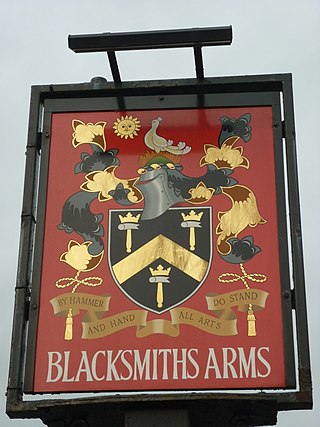
The Worshipful Company of Blacksmiths ranks fortieth among the ancient livery companies of the City of London.
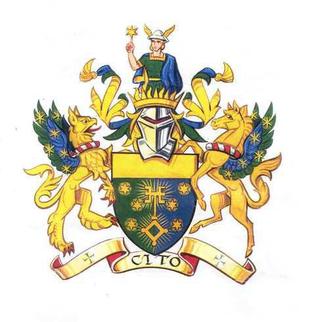
The Worshipful Company of Information Technologists, also known as the Information Technologists' Company, is one of the livery companies of the City of London. The company was granted livery status by the Court of Aldermen on 7 January 1992, becoming the 100th livery company. It received its Royal Charter on 17 June 2010 from Prince Edward.

Dowgate, also referred to as Downgate and Downegate, is a small ward in the City of London, the historic and financial centre of London, England. The ward is bounded to the east by Swan Lane and Laurence Poutney Lane, to the south by the River Thames, to the west by Cousin Lane and College Hill, and to the north by Cannon Street. It is where the "lost" Walbrook watercourse emptied into the Thames.





















